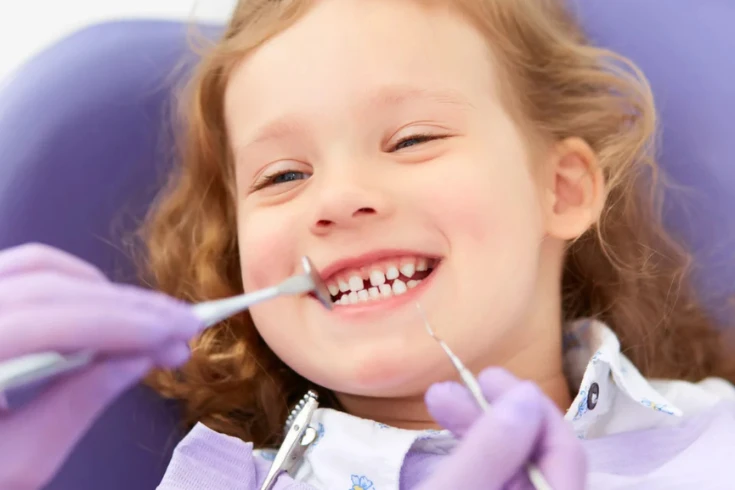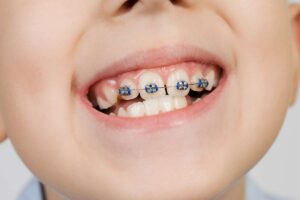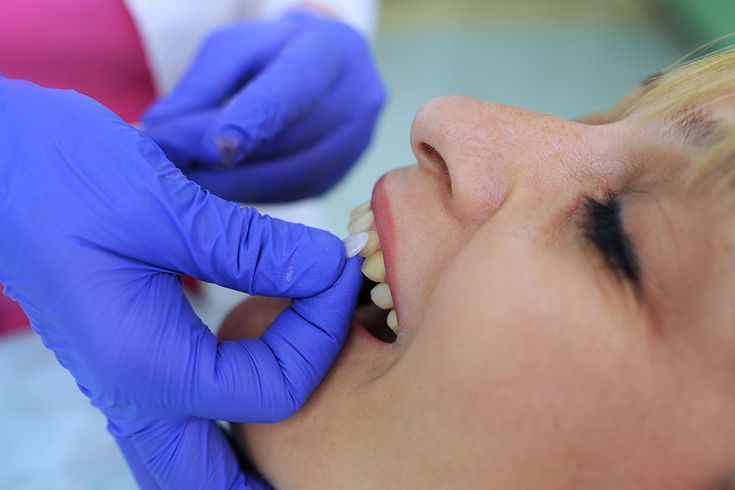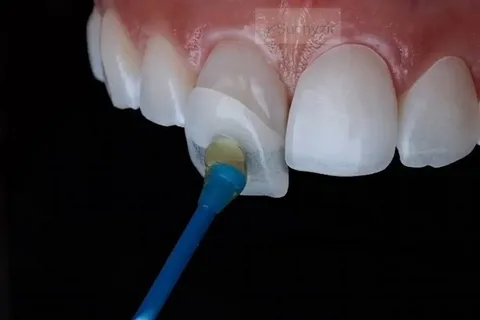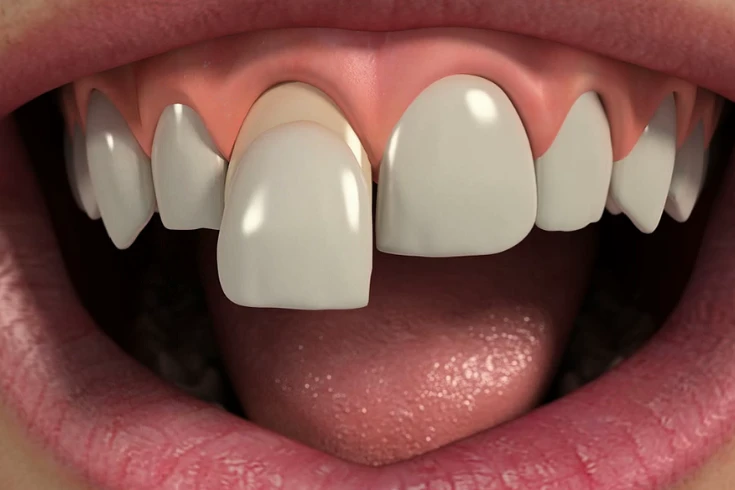Children’s dental braces are a standard orthodontic treatment that helps correct misaligned teeth, guiding them into the proper position for a healthy, beautiful smile. Early orthodontic intervention can prevent future dental problems, making braces a crucial part of pediatric dental care. Whether your child has crowding, spacing issues, or bite problems, braces can provide a solution that supports long-term oral health.
This comprehensive guide explores everything you need to know about children’s dental braces, including the types available, the benefits, the process involved, cost considerations, and tips for choosing the right orthodontist. With this knowledge, you can confidently navigate your child’s orthodontic journey, ensuring they achieve a healthy, aligned smile.
Why is Early Orthodontic Intervention Important for Children?
Early orthodontic treatment, typically between ages 7 and 10, can address dental issues before they become more severe. The American Association of Orthodontists recommends that children have their first dental evaluation by age 7. By this age, enough permanent teeth have emerged to assess potential problems. Early intervention can guide jaw and incoming tooth growth, avoiding more complex treatments later in life.
Benefits of Having Early Orthodontic Treatment
Correcting Bite Issues: If left untreated, bite problems such as overbite, underbite, or crossbite can lead to chewing difficulties, speech problems, and abnormal wear on tooth surfaces.
Preventing from Future Issues: Addressing alignment and bite issues can prevent more severe problems, such as tooth impaction, which may require surgery if not corrected early.
Improves Self-Esteem: Children receiving orthodontic treatment early often feel more confident as they grow, knowing their teeth will be straight and healthy.
Simplifies Future Treatment: Early treatment can reduce the need for extensive orthodontic work in the future, potentially shortening treatment time and making the process more comfortable for your child.
What is the best age for kids to have braces?
The specific issues and the child’s dental development determine the best age for braces. However, most orthodontists recommend starting treatment between ages 9 and 14 when the child’s permanent teeth have mostly come in, but the jaw is still growing. Starting braces during this period allows the orthodontist to correct alignment issues more effectively, leveraging the natural growth spurts to guide teeth into proper positions.
Early evaluation around age 7 is crucial to determining the best time to start treatment. If severe issues are identified early, some children undergo two-phase orthodontic treatment. The first phase begins as early as seven, while the second phase starts around 12.
Which Child’s Dental Braces Are Best?
There is no exact answer for which child’s dental braces are best. It depends on the specific dental needs, personal preferences, and budget. Here are the most common types of braces for children:
- Traditional Metal Braces: These are the most common and effective for treating various orthodontic issues. They are durable and typically more affordable, making them a popular choice for kids.
- Ceramic Braces: These braces are less noticeable than metal braces as they use clear or tooth-colored brackets. They are ideal for kids concerned about appearance but may be more expensive.
- Lingual Braces: Placed on the back of the teeth, making them invisible from the front. While effective, they are less common for children due to their complexity and higher cost.
- Clear Aligners: Similar to Invisalign, they are nearly invisible and removable. It is an excellent option for older kids and teens who can wear them consistently, though they may only suit some cases.
The Process Involved in Getting Children’s Dental Braces
Understanding the process of getting braces for your child can help you prepare them for what to expect. Here’s a step-by-step overview:
Initial Consultation with an orthodontist
The first step is to schedule an evaluation with an orthodontist. The orthodontist will assess your child’s teeth, bite, and jaw alignment. The orthodontist will take several tests and impressions to understand the underlying structures. According to the evaluation, the orthodontist will recommend whether your child needs braces and the best type of treatment.
Planning of the treatment
After recommending braces, the orthodontist will develop a detailed treatment plan that includes the type of braces, the treatment duration, and cost considerations. You’ll also have the opportunity to discuss concerns and learn how to care for your child’s braces.
Fitting the Braces
When the treatment begins, the orthodontist bonds the brackets to your child’s teeth and attaches the archwires. This process is usually quick and painless, though your child may experience discomfort adjusting to the braces.
Regular Adjustment of the braces
Your kids will need regular appointments to adjust the braces throughout the treatment. These visits typically occur every 4-8 weeks and are essential for ensuring the teeth move according to the treatment plan. The staff will provide trays for clear aligners.
Managing the Discomfort
It’s common for children to experience some discomfort after getting braces or following adjustments. Over-the-counter pain relievers and orthodontic wax can help alleviate any soreness or irritation. You should eat soft foods and maintain good oral hygiene during these times.
Completion of the Treatment
When the treatment is complete, the orthodontist will remove the braces, revealing your child’s new smile. The dentist will provide a retainer to maintain the results and prevent your teeth from returning to their original positions.
Post-treatment care for children
After removing braces, your child must wear a retainer, as directed by the orthodontist, to keep the teeth straight. Follow-ups and diligent oral hygiene are essential to keep their smile healthy and beautiful.
The Benefits of Dental Braces for Children
Orthodontic treatment for children is beneficial in the long term. Here are some key advantages:
Improves the Oral Health
Straight teeth are easier to clean, reducing the risk of cavities, gum disease, and other dental problems. Properly aligned teeth help your child maintain better oral hygiene, leading to a healthier smile.
Correction of the Bite Issues
Braces correct bite issues that can lead to chewing, speaking, and even breathing difficulties. Addressing these problems early on helps your child develop proper oral function and prevents future complications.
Helps to Boost Confidence
A well-aligned smile can significantly boost your child’s self-esteem. They’ll feel more confident in social situations, at school, and in photos, knowing their smile looks its best.
Prevention from Future Dental Problems
Early orthodontic treatment prevents the need for more invasive procedures later in life. Avoiding complications such as tooth impaction or jaw surgery would also help.
Long-Term Savings
While braces may be costly in the short run, they save money by preventing more serious dental problems that could require expensive treatments.
Challenges and Considerations for the Parents
While the benefits of braces for children are clear, parents should also be aware of some challenges and considerations:
Time Commitment
Orthodontic treatment for children typically lasts between 18 and 24 months, though the duration can vary. Regular visits to the orthodontist and adherence to care instructions are essential for successful treatment.
Cost of the Treatment
The cost of braces varies depending on the type, complexity of the case, and geographic location. Traditional metal braces are usually affordable, while clear aligners and lingual braces are expensive. Most dental insurance plans cover some of the cost, so consult your provider.
Dietary Restrictions for their children
Certain foods can damage braces, so you should not allow your child to eat hard, sticky, or chewy foods, as these can break the brackets or wires. These dietary restrictions require extra attention to what your child eats.
Maintaining Oral Hygiene
Having braces will make brushing and flossing more challenging, increasing the risk of cavities and gum disease. You must ensure your child follows a thorough oral hygiene routine, such as brushing after every meal, flossing daily, and using any recommended tools, such as interdental brushes.
Compliance with the Treatment
For treatment to be effective, your child must follow the orthodontist’s instructions. They may recommend you wear rubber bands, headgear, or other appliances and attend all scheduled appointments.
Factors Affecting the Cost of Children’s Dental Braces
Several factors influence the cost of children’s dental braces, including:
- Types of Braces: If you are getting metal braces, they are generally cheaper, while clear aligners and lingual braces are expensive.
- Complexity of the Case: If you have severe misalignments or bite issues, it consumes more time and requires additional appliances. Therefore, it will eventually increase the cost.
- Geographic Location: Orthodontic fees vary by region, with urban areas typically costing more.
- Insurance Coverage: Some dental insurance plans cover a portion of the cost of children’s braces. Be sure to understand your plan’s coverage details and out-of-pocket expenses.
Choosing the right Orthodontist for Your Child
There are a large number of orthodontists available. Out of many, you need to select the right orthodontist to ensure successful treatment and a positive experience for your child. Here are some tips for choosing the best orthodontist:
Check the Credentials of the Orthodontist
You need to ensure that the orthodontist is board-certified and has specialized training in the field. Additionally, it would help if you looked for a provider with experience treating children and a strong reputation in the community.
Read Reviews
You can also learn about the orthodontist’s reputation from Online reviews and testimonials. These provide valuable insight into other families’ experiences. Look for feedback on the orthodontist’s communication, treatment effectiveness, and overall care.
Evaluate Communication
Choose an orthodontist who communicates well with both you and your child. The orthodontist should explain the treatment plan clearly, answer questions, and make your child comfortable.
Considering the Office Environment
The orthodontist’s office should be child-friendly and welcoming, with experienced staff familiar with children. A positive environment can make a significant difference in your child’s experience.
Assess the Technology they are using.
Modern orthodontic practices use advanced Technology to provide more accurate diagnoses and treatment. Ask about the orthodontist’s tools and techniques, such as digital X-rays, 3D imaging, and computer-guided treatment planning.
Conclusion
Children’s dental braces invest in your child’s future, providing a beautiful smile and improved oral health and self-confidence. You can make informed decisions about your child’s orthodontic care by understanding the types of braces available, the treatment process, and the factors that affect cost. Early intervention is critical, and choosing the right orthodontist ensures your child receives the best possible care throughout their orthodontic journey. With proper treatment and care, your child will enjoy a healthy, aligned smile that lasts a lifetime.
FAQ’s
At what age should my child have their first orthodontic evaluation?
The American Association of Orthodontists recommends that children have their first orthodontic evaluation by age 7. At this age, enough permanent teeth have emerged to assess potential problems.
What are the benefits of early orthodontic treatment for children?
Early orthodontic treatment can correct bite issues, prevent future dental complications, improve self-esteem, and simplify future treatments, potentially shortening the overall treatment duration.
What is the best age for children to get braces?
Most children get braces between the ages of 9 and 14, when their permanent teeth have mostly come in, but their jaws are still growing. This timing allows for effective correction of alignment issues.
What types of braces are available for children?
The most common types of braces for children include traditional metal braces, ceramic braces, lingual braces, and clear aligners. The choice depends on your child’s needs, preferences, and your budget.
How long does orthodontic treatment with braces usually last for children?
Orthodontic treatment typically lasts between 18 and 24 months, although the duration can vary depending on the complexity of the case and the type of braces used.

